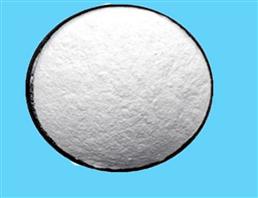ISO Factoroy Supply Sialic Acid
Product Name: sialic acid
CAS No:131-48-6
EINECS No:205-023-1
Color:White powder
Purity:98%
Certificate:KOSHER,Halal,ISO9001;IQNET
Sialic acid is a generic term for the N- or O-substituted derivatives of neuraminic acid, a monosaccharide with a nine-carbon backbone.
It is also the name for the most common member of this group, N-acetylneuraminic acid (Neu5Ac or NANA). Sialic acids are found widely distributed in animal tissues and to a lesser extent in other organisms, ranging from fungi to yeasts and bacteria, mostly in glycoproteins and gangliosides (they occur at the end of sugar chains connected to the surfaces of cells and soluble proteins).
In general, the amino group bears either an acetyl or a glycolyl group, but other modifications have been described. These modifications along with linkages have shown to be tissue specific and developmentally regulated expressions, so some of them are only found on certain types of glycoconjugates in specific cells.
1. Sialic acid is a carbohydrate widely found in nature. It is also a basic component of many glycoproteins, glycopeptides and glycolipids. It has a wide range of biological functions, such as regulation of blood protein half-life, neutralization of various toxins, and cells. Adhesion, immune antigen-antibody reaction and protection against cell lysis.
2. Biochemical derivatives of sialic acid are also commonly used in the synthesis of drugs.
3. In the natural world, from the virus to the animal, the enzyme which is hydrolyzed to remove the terminal N-acetylneuraminic acid (neuraminidase) has been identified by the physiological activity change of the enzyme. The role of acidic sugar residues.
1. Sialic acid: Sialic acid is a derivative of a 9-carbon monosaccharide. The name comes from the Greek σιαλοσ (sialos) 'saliva'.
2. This is a negatively charged ion that gives the saliva a smooth feel.
3. It is not only based on the role of "inducing" invading pathogens, but is currently recognized as a transmitter of gangliosides
and is a component of the brain.
4. Sialic acid can prevent the invasion of germs.
5. Sialic acid is also a receptor for influenza viruses, and is a binding site for influenza viruses to bind to mucous cells.






 China
China

